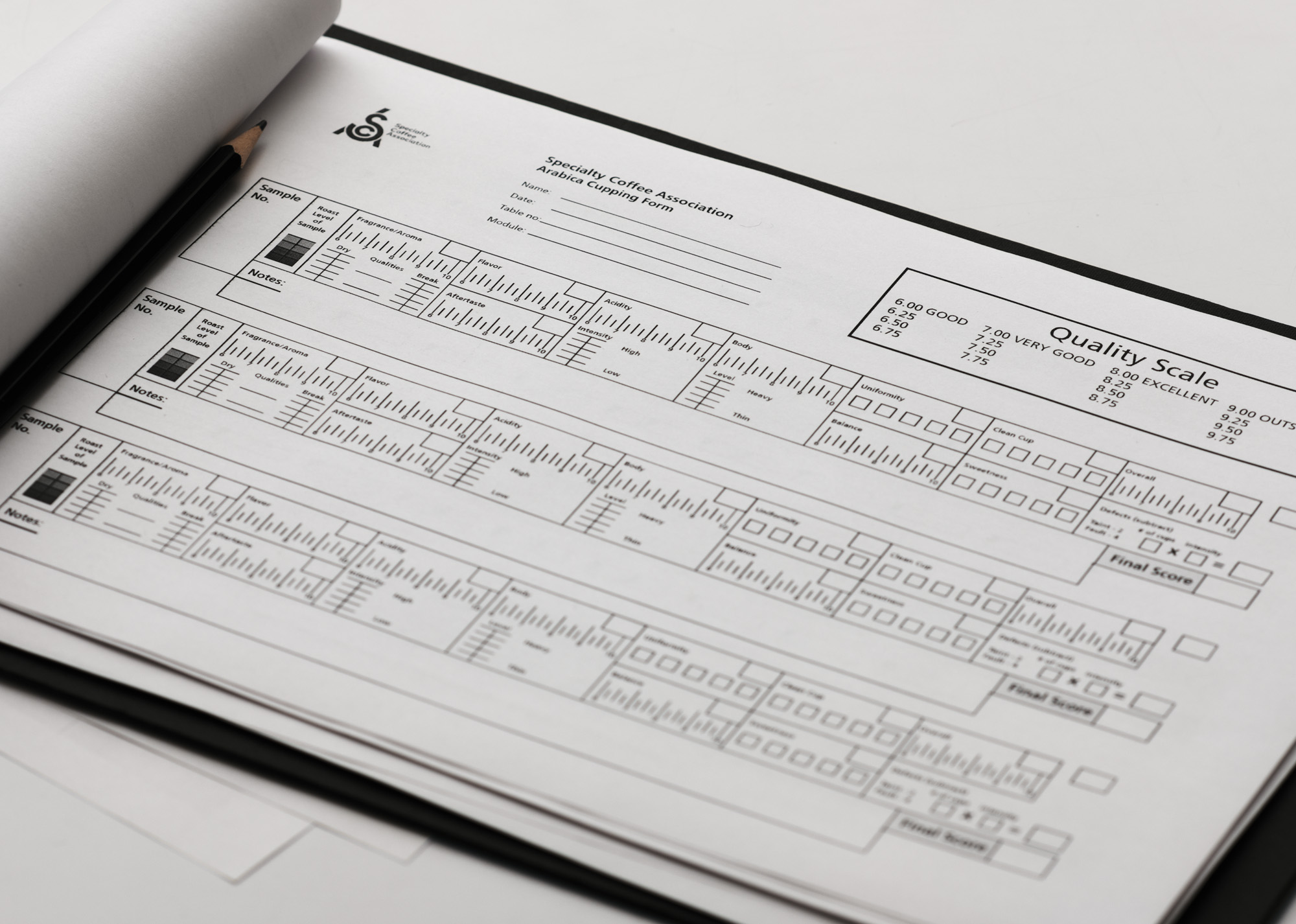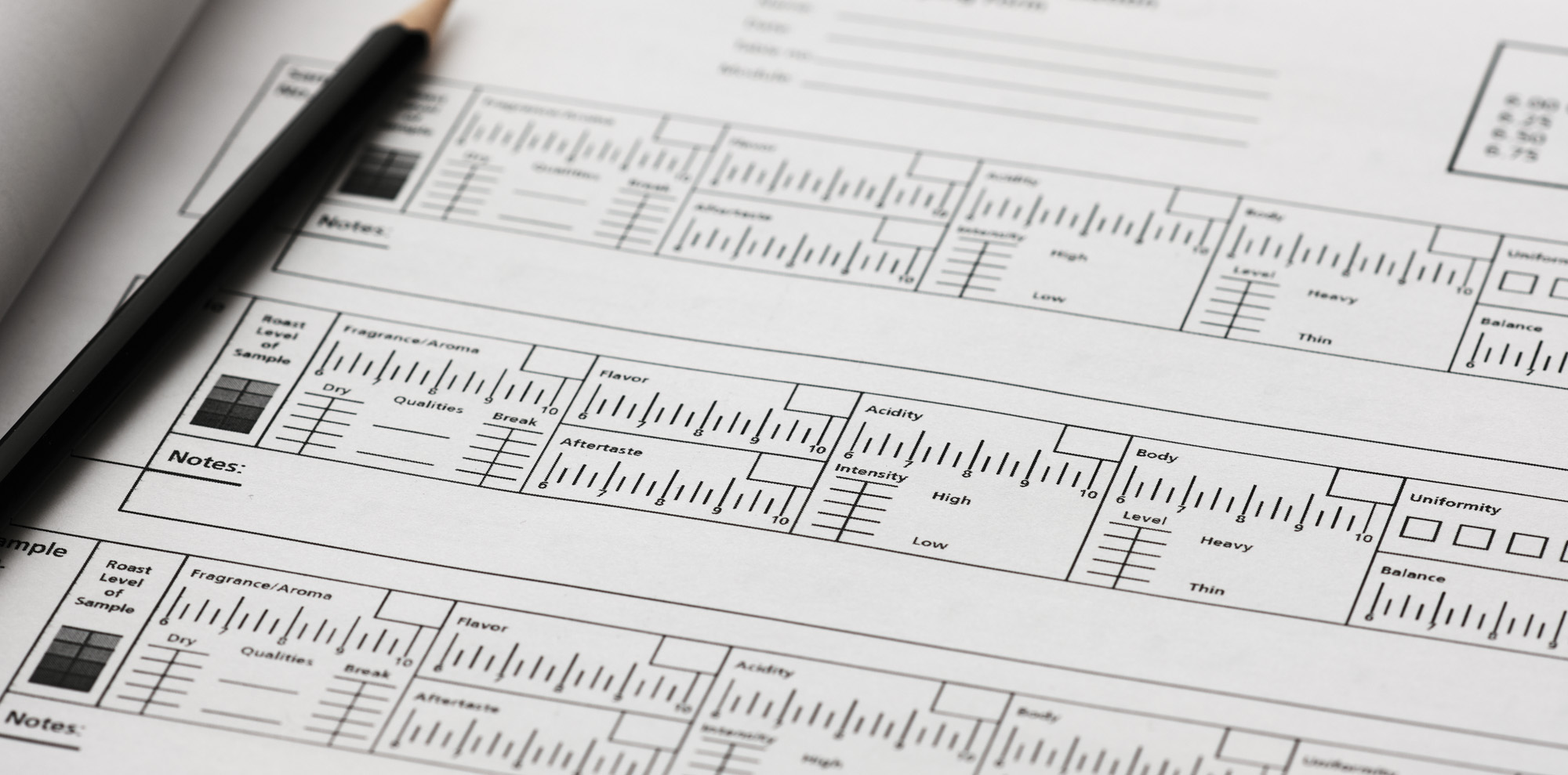The Specialty Coffee Association of America (SCAA: the US–based precursor to the Specialty Coffee Association) developed their scoring system in 1984. It was the first 100-point-based system for coffee. Whilst the scoresheet has ten categories, each scored out of a possible 10, only seven categories are scored based on quality. The three categories that are not scored on the basis of quality, as well as an additional point-deductions system, are used to help cuppers identify defective lots.
The SCA Arabica Cupping Form and corresponding Protocols were designed specifically for Arabica coffee. In practice, though, they are widely used for scoring interspecific hybrids such as castillo, too.
Seventy Points for Quality
The seven categories on the SCA Cupping Form are scored, based on their quality, on a scale of from 6 through 10. The scores don’t go below 6 on this scoresheet because it was designed for scoring specialty-grade coffees, which the SCA defines as scoring above 80 points. Scores below 6 out of 10 are not considered to be acceptable for specialty-grade coffee. Scores are awarded down to a resolution of 0.25 of a point.
The seven categories developed by the SCAA assess the following elements.
The same seven categories have been adapted by World Coffee Events and form the basis of the World Brewers Cup sensory scoresheet — the world’s preeminent filter coffee competition.
Thirty Points for Intensity
The three categories on the scoresheet that bring the total up to a possible 100 points are used to identify defects. These include the following:
- Sweetness
- Clean cup
- Uniformity
These categories assume cuppers are tasting five bowls of each sample they are cupping. Each category has five check boxes on the cupping form — each box is worth 2 points.

